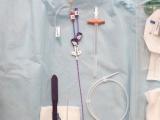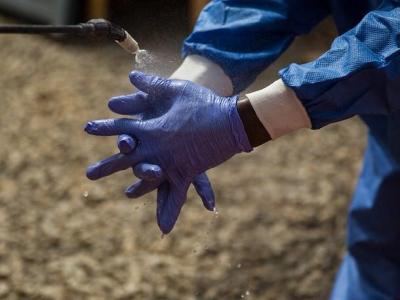As the world marks Antibiotic Awareness Week, antibiotic stewards from around the country are meeting in Baltimore to share their knowledge and discuss ways to improve antibiotic use in hospitals and healthcare facilities.
The 2-day Antimicrobial Stewardship Research Workshop, hosted by the Society for Healthcare Epidemiology of America (SHEA), brings together physicians, pharmacists, and other health professionals to learn how to study and assess the performance of antibiotic stewardship interventions. These interventions, which aim to promote appropriate antibiotic use in healthcare facilities, reduce the spread of drug-resistant infections, and enhance patient outcomes, are an essential component of global efforts to preserve the effectiveness of antibiotics.
Co-chair Elizabeth Dodds-Ashley, PharmD, MHS, says the workshop is an important venue for sharing best practices in the ongoing fight against antibiotic resistance. Because while there are many different strategies for reducing antibiotic use in inpatient and outpatient settings, which strategies work best, and where, is still unclear.
"I think that there have been programs trying to optimize antibiotic use since we first knew that there could be antibiotic resistance," Dodds-Ashley, an associate professor of medicine at Duke University, told CIDRAP News. "But I think what we continue to struggle with, and why we need more research, is that we don't necessarily know the best way to do that."
From concept to cultural change
Antimicrobial stewardship, as a concept, has existed for more than 20 years. The term was coined in the late 1990s, and in 1997 SHEA and the Infectious Diseases Society of America (IDSA) published guidelines for preventing antimicrobial resistance in hospitals. "Appropriate antimicrobial stewardship that includes optimal selection, dose, and duration of treatment, as well as control of antibiotic use, will prevent or slow the emergence of resistance among microorganisms," the authors wrote.
Since then, antimicrobial stewardship programs (ASPs) have been established in large and small hospitals around the country to promote and guide appropriate antibiotic use, and the concept of stewardship has become widely recognized as a critical part of a comprehensive approach to preventing antibiotic resistance.
In 2014, the Obama administration's National Action Plan for Combating Antibiotic-Resistant Bacteria called for strengthening stewardship in inpatient, outpatient, and long-term care settings. In 2016, the Centers for Medicare and Medicaid Services required all hospitals to have an ASP in order to receive payment from federal health insurance programs.
"We've come a long way in the last 15 to 20 years; now, people know what stewardship is," Dodds-Ashley said. "I certainly think there's a much better knowledge base and understanding of why stewardship is needed and the problem of antibiotic resistance."
While the size and extent of ASPs vary, they are guided by "core elements" established by the Centers for Disease Control and Prevention (CDC) in 2014. These elements include commitment from hospital leaders, tracking antibiotic use and resistance and reporting that information to healthcare providers, and educating providers about optimal prescribing.
"We have core concepts of how we can perform stewardship, and I think a lot of those concepts work…and we have a fair amount of literature that shows those concepts work in different scenarios," said Lisa Davidson, MD, medical director of the Antimicrobial Support Network at Atrium Health, a nonprofit healthcare system in North and South Carolina. "There's work to be done, but we've definitely come a long way, and it's definitely having an impact on the care of our patients."
Davidson, who first started getting involved in stewardship in 2003 during her infectious diseases fellowship, has overseen several successes with the Antimicrobial Support Network, including a 24% reduction in antimicrobial use at Atrium's acute care settings in Charlotte, N.C. She said that for stewardship to be successful, it needs to be a recognized goal for an institution and to have dedicated resources and people to do the work.
"Stewardship really requires cultural change, it really requires people—pharmacists, MDs—to work with other clinicians to actually change prescribing behavior," she said.
Once those elements are in place, Davidson said, then it's up to each healthcare facility to figure which strategies are most effective for reducing antibiotic use and improving patient care. "I don't think that it's ever going to be one-size-fits-all; each institution, depending on the location of the patient, is going to have to pick a different set of tools," she said.
Building skill sets
Learning how to study what tools work best in what healthcare settings, and how to share that information with other stewards, is a primary goal of the SHEA workshop.
"One of the things with stewardship…is that it's often those frontline clinicians who aren't necessarily trained in research who are the ones out there doing these interventions," said Dodds-Ashley. "We need them to have this skill-set so that they can better disseminate their work to others so that we can learn best practices."
SHEA is hosting the event in collaboration with IDSA, the Pediatric Infectious Diseases Society, and the Society of Infectious Diseases Pharmacists.
See also:
Nov 14-15 SHEA Antimicrobial Stewardship Research Workshop





















